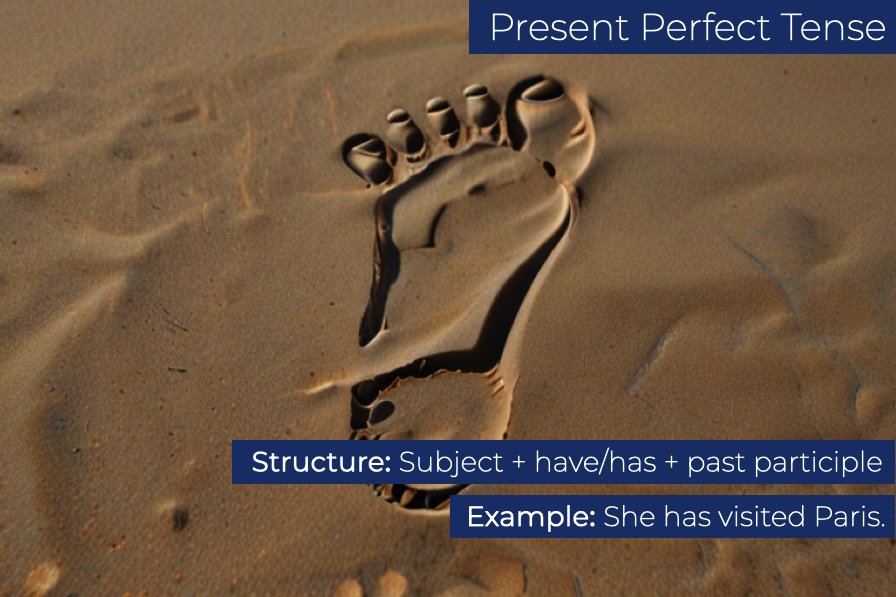The present perfect tense is an essential aspect of English grammar, used to link past actions or events to the present. It helps convey experiences, changes, and completed actions with relevance to the present moment. Here’s a detailed look at what it is, how it is used, when it is used, and some exercises and examples.

What Is Present Perfect Tense?
The present perfect tense is formed using the auxiliary verb “have” or “has” followed by the past participle of the main verb. It connects past actions or events to the present. The present perfect tense is used with “for” and “since” when actions are ongoing. For example, “I have lived in New York for five years” implies that I still live in New York. In contrast, the simple past tense is used with “for” when the actions have already concluded.
How It Is Used
Affirmative Sentences
- Subject + am/is/are + verb-ing
- Example: She is reading a book
Negative Sentences
Negative sentences are formed by adding “not” after “have” or “has.”
- Example: They have not (haven’t) finished their homework.
Questions
Questions are formed by placing “have” or “has” before the subject.
- Example: Have you seen this movie?
When It Is Used
Unspecified Time Before Now
The present perfect tense is used for actions or events that occurred at an unspecified time before now. The exact time is not important.
- Example: I have traveled to several countries.
Experiences
It is used to talk about experiences up to the present.
- Example: She has tried sushi before.
Changes Over Time
The present perfect tense can describe changes that have occurred over time.
- Example: He has become more confident.
Completed Actions with Present Relevance
It is used for actions that have been completed in the past but are relevant to the present moment.
- Example: They have just finished their project.
What’s your English level?
Discover your level now: A1/A2/B1/B2/C1/C2 and GET your certificate!
Examples
Affirmative Sentences
- We have visited the museum.
- He has written three books.
Negative Sentences
- I have not (haven’t) met her before.
- She has not (hasn’t) received the package.
Questions
- Have you completed the assignment?
- Has he called you yet?
Present Perfect Tense Exercises
Convert the following sentences into the present perfect tense:
- She (eat) ______ breakfast already.
- They (not/visit) ______ the new mall.
- He (see) ______ that movie.
- (you/read) ______ this book?
- We (finish) ______ our homework.
Answers
- She has eaten breakfast already.
- They have not (haven’t) visited the new mall.
- He has seen that movie.
- Have you read this book?
- We have finished our homework.
Understanding the present perfect tense is crucial for effectively linking past actions to the present and expressing experiences, changes, and completed actions with present relevance. By mastering its forms and uses, you can enhance your communication skills in English.





